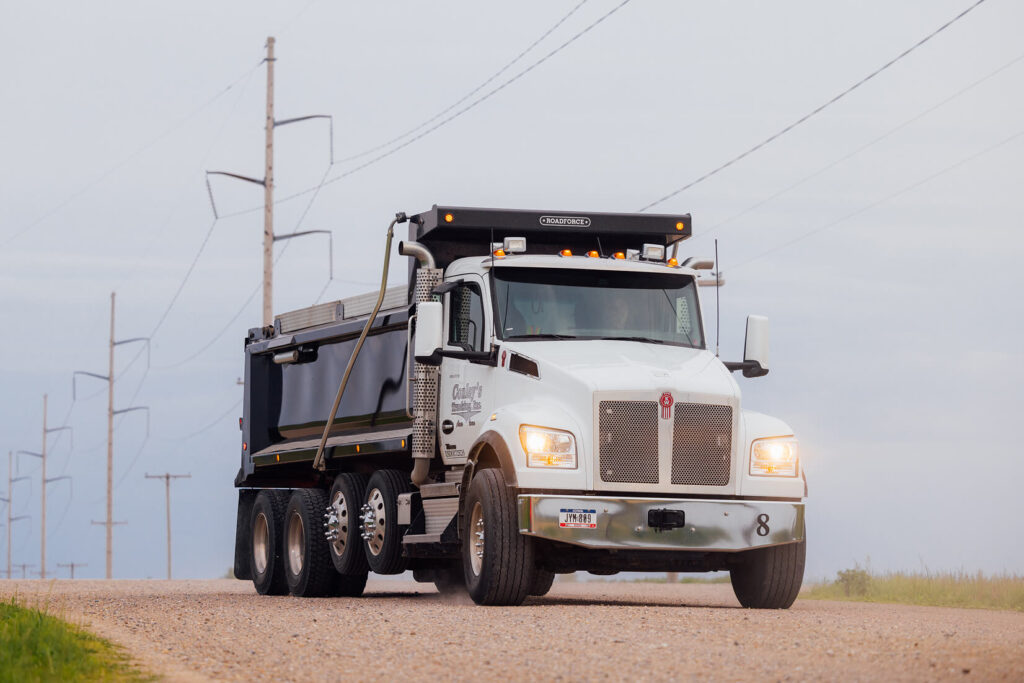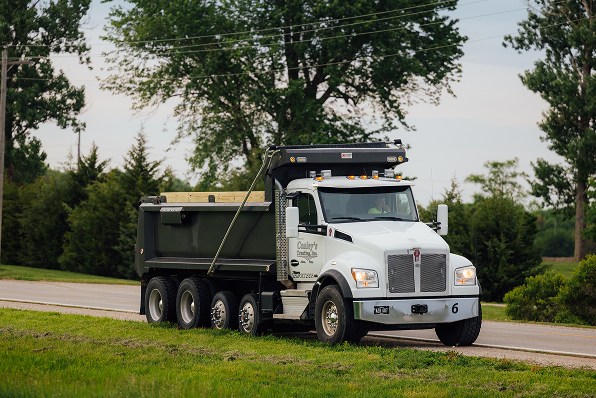We deliver landscaping materials with care and know-how — helping you build lawns, beds, and garden paths that grow strong from the start.

Best for: New lawns, flower & vegetable gardens, improving soil health.
Where to use: Ideal for filling low spots, leveling uneven ground, and providing a nutrient-rich base for lawns, gardens, and flower beds. Black dirt is especially beneficial for gardens because it contains a higher percentage of organic matter.
How to use: Spread evenly to create a smooth, level planting surface. Mix black dirt into existing soil to improve fertility and moisture retention for garden beds.
Where to use: Ideal for filling low spots, leveling uneven ground, and providing a nutrient-rich base for lawns, gardens, and flower beds. Black dirt is especially beneficial for gardens because it contains a higher percentage of organic matter.
How to use: Spread evenly to create a smooth, level planting surface. Mix black dirt into existing soil to improve fertility and moisture retention for garden beds.
Where to use: Perfect for garden beds, flower patches, vegetable plots, or anywhere you want to improve soil texture and fertility.
How to use: Mix compost into the topsoil or existing soil to enrich and improve moisture retention. Compost helps plants thrive by supplying nutrients and encouraging beneficial soil organisms.
Where to use: Used primarily to raise and level areas before planting or laying sod; ideal for filling in holes or creating berms.
How to use: Compact fill dirt firmly in layers to create stable, even terrain. Best used as a base before adding topsoil or sod.
Note-Dirt Compacts so usually get a little extra

Best for: Creating stable, long-lasting walkways, patios, or stone bases.
Where to use: Used as a leveling layer under pavers, flagstones, or stepping stones. Sand locks stones in place while allowing drainage and minor adjustments.
How to use: Spread and screed sand evenly in a 1–2 inch layer before laying stones or pavers. Ensure a smooth, level surface for even installation.
Where to use: Used as a leveling layer under pavers, flagstones, or stepping stones. Sand locks stones in place while allowing drainage and minor adjustments.
How to use: Spread and screed sand evenly in a 1–2 inch layer before laying stones or pavers. Ensure a smooth, level surface for even installation.
Where to use: Great as a compacted sub-base beneath patios, walkways, or driveways, providing solid, durable support that prevents shifting and settling.
How to use: Spread in 3–4 inch layers and compact firmly before adding surface layers like sand or pavers.
Where to use: Used beneath base layers to improve drainage and stability for patios, paths, and hardscaping projects.
How to use: Spread limestone in 3–4 inch layers, compacting each layer for maximum stability. Ideal for areas with water drainage issues.

Best for: Adding curb appeal, defining garden beds, and improving landscape aesthetics.
Where to use: Perfect for landscaping accents, drainage areas, patios, or utility projects. Smooth texture and natural colors complement any garden design.
How to use: Spread a 2–3 inch layer over designated beds or pathways to suppress weeds and improve appearance. Mix sand under rocks for added drainage where needed.
Where to use: Perfect for landscaping accents, drainage areas, patios, or utility projects. Smooth texture and natural colors complement any garden design.
How to use: Spread a 2–3 inch layer over designated beds or pathways to suppress weeds and improve appearance. Mix sand under rocks for added drainage where needed.
Where to use: An eco-friendly, budget-friendly option for walkways, garden paths, or base layers for patios. These materials are strong and durable.
How to use: Spread and compact recycled materials in layers similar to gravel or concrete aggregate, depending on application.
For hardscaping, layer base materials (gravel, recycled concrete, sand) in 3–4 inch increments, compacting each before adding the next.
Mix compost with black dirt or existing soil to boost fertility. For lawns, spread topsoil or compost evenly 2–4 inches thick before seeding or sodding.
Choose clean gravellimestone or river rock in areas prone to water accumulation for better drainage.
Feel free to combine materials (e.g., black dirt + compost) to improve soil quality and drainage.
Ready to start your landscaping project?

Generally, 2–4 inches of topsoil or compost works best.
Generally, 2–4 inches of topsoil or compost works best.
Yes, mixing black dirt with compost boosts fertility and improves drainage, making it perfect for gardens and lawns.
You can plant as soon as the soil or compost is spread and leveled. Mixing compost into existing soil before planting improves results.

Since 1978, we’ve hauled with pride.